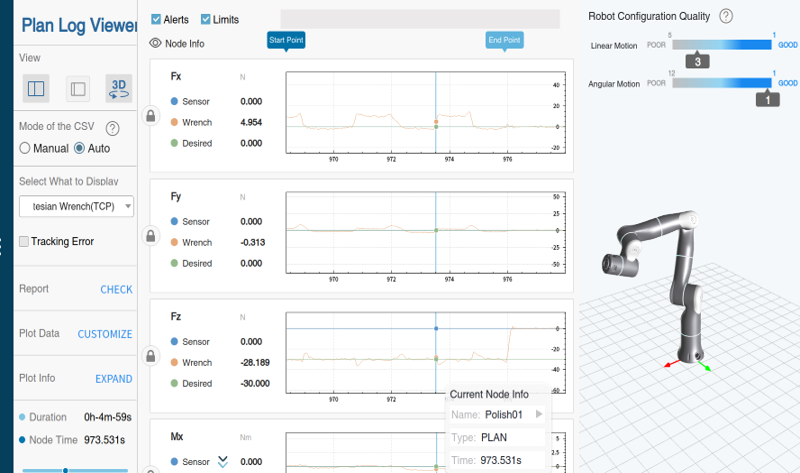
Automated Ironing Solution for Electric Vehicles
At a Glance
• Customer: A leading automotive seat supplier (Subject to an NDA).
• Problem: The time-consuming and labor-intensive task of removing creases from leather seats.
• Solution: Flexiv utilized a Rizon 4 robot coupled with an off-the-shelf steam iron to fully automate the ironing process for leather seats.
• Key Features: Real-time data collection, advanced force control capabilities, and customized tooling to attach ironing equipment.
• Advantages: Precise real-time force sensing, safe human-robot collaboration, consistent results, and adaptability to various seat models.

Overview
Automotive seats are composed of metal frames, sprung cushioning, and foam padding. Upholstery, in the form of fabric or leather, is then sewn over this base to create a cover. When the cover is leather, the stitching process often leads to wrinkling and creasing due to the seat's curvature and the leather's inflexible nature. Since these wrinkles are unsightly, manufacturers have traditionally used manually operated irons to smooth the surface of the leather. While effective, this manual method introduces the element of human error and, with the irons operating at high temperatures, exposes workers to potential burns or scalding, potentially endangering their health.
Customer Profile
As a leading Asia-based automotive seating provider, the client is renowned within the automotive industry for their dedication to quality and innovation in material and leather seat manufacturing. Seeking to automate the labor-intensive process, the client approached Flexiv to automate their crease removal process while maintaining their trademark superior levels of craftsmanship and customer satisfaction.

Flexiv's Solution
Flexiv's automotive seating ironing application leverages a Rizon 4 adaptive robot in combination with a standard steam iron. By utilizing the Rizon 4's precise force control capability, Flexiv's solution can replicate the pressure and sensitivity employed by an experienced worker when ironing. This ensures a consistent yet compliant application of force across various seat models, boosting production efficiency and eliminating the risk of injury or human error.
Key Advantages
1. Contour Tracking

• The Rizon 4 utilizes a joint force control servo operating at 5000Hz and a 1000Hz whole-arm coordination algorithm for an ultra-high response rate, enabling instantaneous adaptation to seat curvature.
• Able to sense and adapt to the resistance of the foam, the robot maintains the exact pressure required for optimal crease removal with a precision level that meets or exceeds human capability.
2. Rapid Deployment and Debugging

• Flexiv's graphical programming system, Flexiv Elements, allows engineers to quickly create new programs for different seat models using a library of pre-programmed primitive function blocks.
• Rizon's ‘free-float’ functionality enables engineers to record new ironing trajectories for faster, simpler debugging and deployment.
• Whole-body force control ensures that Rizon is inherently safe, allowing operation without cages or barriers in close proximity to human workers.
3. Mixed-Line Production

• Once programmed, the Rizon 4 can operate on multiple seating models in succession, enabling a true mixed-line production process.
• With an end-effector force control accuracy of 0.03N, Flexiv's ironing solution can achieve a greater precision than is humanly possible.
• Compatible with computer vision solutions, Rizon's integrated AI can enable the robot to detect seat creases and automatically select the most efficient ironing strategy.
4. Real-time Quality Assurance

• Force control data from every stage of the ironing process is automatically recorded, allowing the full traceability of every seat coving ironed. Real-time data can also be monitored, either manually or automatically, for error detection and metric analysis.




